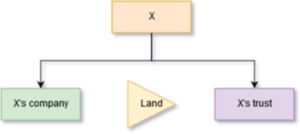
Business assets of GST registered entities, including business assets of a business carried on in a trust, attract significant tax concessions and advantages including:
- income tax deductibility – generally either in the income year when they cost money: notably on purchase, or across their effective life in the case of depreciation; and
- goods and services tax (GST) credits on GST creditable acquisitions.
It is to be expected that there are clawbacks under the taxation law when a business asset, that has attracted concessions and advantages under the taxation system in anticipation of its productive business use, is transferred to a beneficiary of a business trust that owns the asset for the beneficiary’s private use.
Trading stock taken out of a business for private use
It can be seen with business trading stock, for example, that a strictly market value disposition is taken to occur for income tax purposes when trading stock is taken for private use without regard to the money that may have changed hands. This treatment contrasts with the more flexible choice of actual cost, replacement cost and market selling value that is allowed to a business in determining trading stock on hand: section 70-45 of the Income Tax Assessment Act (ITAA) 1997.
Section 70-90 of the ITAA 1997 includes the market value of trading stock in income assessable to income tax when it is disposed of outside of the ordinary course of business. Section 70-100 can also include the market value of trading stock in the same income where the item, though not disposed of, has ceased to be trading stock.
Handing over depreciable equipment
The balancing charge or adjustment which is assessable to income tax on the disposal of an item of depreciable plant and equipment, such as a car used in the business of a trust, is determined based on its termination value. Where a business (taxpayer) stops holding the item under a non-arm’s length dealing for less than market value, then the item’s termination value is taken to be the market value of the item just before that dealing under item 6 in the table in section 40-300 of the ITAA 1997.
Where business equipment being depreciated by a trust is used privately by a beneficiary of the trust without being disposed of to the beneficiary the item will precipitate a non-deductible private use proportion of use of the equipment. When the item is eventually sold or otherwise disposed of for more than its cost, a capital gain under CGT event K7 attributable to the private use component can arise to the trustee of the trust.
Taxable GST supply without consideration
Generally a supply of property, goods or services by a business that is registered or required to be registered for GST for consideration is a taxable supply. Under section 72-5 of the A New Tax System (Goods And Services Tax) Act 1999 a supply to an associate:
- not registered or required to be registered for GST; or
- where the associate acquires the thing supplied otherwise than for a solely creditable purpose;
is treated as taxable supply even when there is no consideration for the supply. The value of a section 72-5 taxable supply without consideration (a price) is the GST exclusive market value of the supply: section 72-10.
Not worth the tax and accounting trouble
It can be seen from the above that taxation consistently based on market value substitution applies to non-arm’s length provision of business assets to beneficiaries of business trusts for the beneficiary’s private use.
The in specie distribution of a business asset of a GST registered trust to a trust beneficiary for no consideration, or an inadequate consideration, (price) is thus discouraged by the clawbacks. There is no apparent tax advantage to a trust in giving an asset to a beneficiary of the trust when the gift is compared to a sale of the asset. A sale raises far fewer tax compliance challenges!
How getting the business asset to the beneficiary might be done?
A less problematic way to achieve the same thing would be for the trustee to simply sell the business asset in the ordinary course of its business to the beneficiary for its market value (plus GST in the case of a sale by a GST registered business trust) and, concurrently make a capital distribution to the beneficiary to cover the price. Then the clawbacks would not need to be endured.

